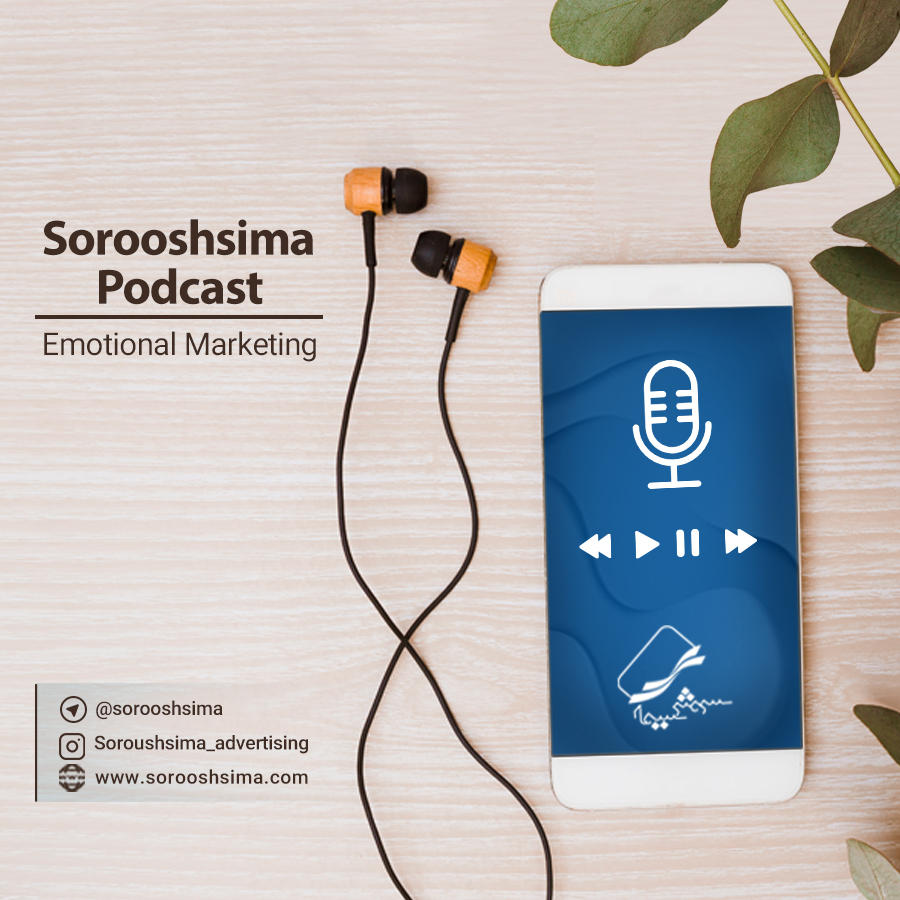Sorooshsima Podcast #14
Emotional Marketing
How do brands effect our emotions?

Many of us think that when we decide to buy a product, we are making a logical decision. But in fact, in many cases, it is based on emotions. In fact, if we are to look at the issue realistically, the reason for the popularity or selection of a particular product is the cost and time the brand has spent on its advertising to attract customers’ emotions. Many advertising experts have realized that this advertising method which is called emotional advertising is used to influence customers as advertising strategy. Many of the advertisements that are affecting the audience today are the same emotional advertising and these emotions at the right time for customers to have a good experience, will definitely boost loyalty.
Studies reveal that when making a decision to buy, people rely more on emotions and information. In fact, these emotional reactions to advertising are one of the best tools for an individual to make a decision.
In his book the Unconscious Branding, One of the great advertising writers, Douglas Van Pratt cites: how can neurology inspire and empower marketing?
The most shocking fact is that we don’t even think of logical solutions, we carefully measure the aspects of logic. Emotions are the base and foundation and the sub-layers of neural circuits that even form the rational study infrastructure. Emotions form the basis of what they themselves are.
Another big advertising person called P J Pereira, Chief Executive Officer of Pereira & O’Dell, a global advertising agency, has said:
I think what has happened is that the advertising industry has spent the past decade commemorating sarcastic and harsh dialogue with people. For a while this approach was great, because it was different form previous approaches, but now people are tired of it and are no longer funny or pretty. Therefore, when the tone of advertising changed and was completely reversed, the tone became relevant, and customers completely reacted to it.
How can we use emotions in Advertising?
In human cognition, scientists believe that we have six basic senses, Happiness, wonder, fear, hatred, anger and sadness and four of these sense are identified as four main senses, according to a research by the institute of neuroscience and psychology, these senses are happiness, sadness, fear/surprise and anger/hatred.
- Happiness:
Brands tend to engage with happy customers, research has proven that happy content helps a lot more people to share their ads. A study in 2010 revealed that positive and emotional posts were shared more than negative ones. One of the positive ads that was shown across the world is an advertisement from an Android Company that features a fascinating video of animal friendships.
Big brands also use happy content to engage people, like Coca-Cola in their motto uses happiness with no boundaries or taste and focuses on happy images of people who are intimately connected.
- Sadness
For many brands, the use of the sad concept, has inspired a lot of success. For example, the Hong Kong met life insurance made a heartbreaking ad in which a little girl eagerly describes all of her father’s qualities that she loves and reveals all of the white lies had told her to make her happy.
- Fear
Fear is a natural instinct that comes from our decision to react correctly to dangers, it (fear) can be used in marketing. To create urgency and speed in decision making, we use fear to force us to change and perhaps motivate us to buy. Scary promotional trickeries have been created to prevent the use of alcoholic beverages and cigarettes. One of the companies that has used this technique in their advertising is the World Wide Fund for Nature which is best known for its controversial and scary imagery.
- Hatred/Anger
In emotional marketing, we can use anger and hatred to create new ideas. Many believe that avoiding anger is very useful, because they see anger as a negative feeling that has negative attitudes. But maybe, if some people get angry and get motivated, that can help create a huge flood of feeling, like seeing the suffering of those around or the injustices that cause this anger.
A successful campaign like (like a girl) that “always on” ran, won the Emmy and Clio for it. To attract attention it used the term “like a girl” which is somewhat offensive and used for inappropriate behaviors and weakness to boys. Also advertising campaigns around the subject of save the children that is trying to raise awareness of the impact of the Syrian crisis on children to incite both sadness and anger.
Consider the following when running a successful emotional advertisement:
- By using the emotion flavor, Pay close attention to realities that can exist in any brand. This means that if we know that our product has certain characteristics in an assured way, we can show it to our clients in the form of emotions.
- Moving in the direction of brand identity: after identifying our brand and understood its personality and frameworks, take note of the feelings of that identity and personality and try to match the tone and content we publish to match the identity and personality we have built for our brand.
- Pay attention to the client’s taste: maybe it is time to put ourselves in our customer’s shoes and find out what type of advertisements do our clients like to listen to at any time or social circumstances. For example, in the current context of our society, ads that deal with sadness may not be very appealing to our clients.
